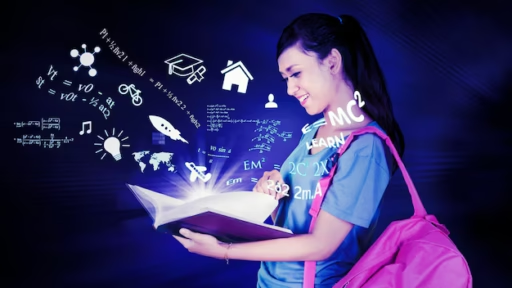In recent years, the integration of artificial intelligence (AI) in education has transformed the traditional classroom into a more dynamic, Education And AIpersonalized, and efficient learning environment. AI’s presence in educational settings has created new opportunities for both students and educators to enhance the teaching and learning process. This article explores how education and AI are transforming the classroom, the benefits and challenges associated with this transformation, and what the future holds for AI in educational settings.
Key Takeaway
AI in education is transforming the classroom by providing personalized learning, automating tasks, and offering data-driven insights, while also presenting challenges that need thoughtful solutions. The future of AI in education promises continued innovation and opportunities for enhanced learning experiences.
Also Read: How Does Education Philosophy Shape Modern Teaching Practices?
Enhanced Personalization and Adaptive Learning
Also Read: What Are The Most Effective Strategies For Funding Higher Education?
One of the most significant contributions of AI in the classroom is the ability to create personalized learning experiences. AI-powered platforms Education And AI can analyze student performance data to identify strengths and weaknesses, tailoring educational content to meet the unique needs of each student. Adaptive learning technologies adjust the difficulty of assignments in real-time, ensuring students are neither under-challenged nor overwhelmed.
Also Read: What Are The Key Benefits Of Enrolling In Online Learning Courses?
Adaptive learning tools such as Smart Sparrow and DreamBox adjust their educational content based on a student’s progress, offering customized exercises that align with their current skill level.
Also Read: What Are Education Sciences And Why Are They Important?
This personalized approach not only improves knowledge retention but also fosters greater student engagement. Teachers can use the data collected by AI systems to better understand their students’ learning patterns and make informed decisions about instructional strategies.
Also Read: What Are The Most Popular Fields In Technical Education?
Automation of Administrative Tasks

AI has significantly reduced the administrative burden on educators by automating routine tasks such as grading, attendance tracking, and scheduling. This automation frees up time for teachers to focus on more meaningful interactions with their students.
AI-driven systems can grade multiple-choice tests and even some types of essays, providing detailed feedback in a fraction of the time it would take a human teacher. These tools help ensure consistency and reduce grading errors.
AI-based facial recognition and attendance systems can track student attendance efficiently, minimizing the disruptions of manual roll calls and ensuring accurate records.
AI-driven scheduling tools assist in creating optimal class timetables and resource allocation plans, making it easier for schools to manage their academic calendar.
Intelligent Tutoring Systems (ITS)
Intelligent Tutoring Systems provide students with additional support outside of the traditional classroom setting. These AI-based tutors mimic human interaction and can guide students through problem-solving processes, answer questions, and offer hints as needed. Systems such as Carnegie Learning’s MATHia use AI to assess a student’s knowledge state and adapt their teaching approach accordingly.
ITS can be particularly beneficial in helping students who may need extra assistance or are working at their own pace. This type of support empowers learners to build confidence and proficiency in subjects that they find challenging, ultimately leading to better academic outcomes.
Enhanced Student Engagement Through AI Tools

Interactive and engaging learning experiences are essential for maintaining student interest. AI-powered educational tools such as chatbots, gamified learning platforms, and virtual reality (VR) applications are making it easier to create captivating learning environments.
AI chatbots can answer student queries and provide 24/7 assistance, allowing learners to access information at their convenience. This helps reduce the workload on teachers and provides immediate feedback to students.
Integrating AI with gamification techniques can turn lessons into interactive challenges, motivating students to participate actively and improve their learning outcomes. Platforms like Kahoot! and Quizizz make learning fun while tracking progress and adapting questions based on student performance.
AI-powered VR and AR applications can simulate real-world scenarios, providing students with immersive experiences that enhance comprehension and retention. For instance, virtual science labs allow students to conduct experiments safely and repeatedly.
Smart Content Creation
AI tools can create digital textbooks, quizzes, and lesson plans tailored to specific learning objectives. This not only saves time for educators but also ensures that educational materials are relevant and up-to-date.
Adaptive Testing:
AI-based testing platforms adapt the difficulty of questions based on student responses, providing a more accurate assessment of their knowledge and understanding. Adaptive testing helps identify learning gaps and supports targeted learning.
Data-Driven Insights for Educators
AI tools offer comprehensive data analytics that provide educators with insights into student performance, classroom engagement, and overall learning trends. These insights enable teachers to identify at-risk students early and develop targeted interventions. Moreover, AI can help educators measure the effectiveness of their teaching methods and make necessary adjustments to improve outcomes.
AI systems can use historical data to predict student performance and identify potential dropouts or academic challenges. By analyzing data points such as attendance, grades, and participation, educators can proactively support students who may need additional resources or guidance.
Challenges and Ethical Considerations

While the benefits of integrating AI in education are extensive, there are challenges and ethical considerations to address:
The collection and use of student data raise concerns about privacy and security. It is essential for schools to implement stringent data protection measures to safeguard student information.
Not all students have equal access to AI-driven technologies due to disparities in funding and resources. Ensuring that AI tools are accessible to all students, regardless of socioeconomic background, is crucial for fostering an equitable learning environment.
The rise of AI in education has sparked discussions about the future roles of teachers. While AI can automate some aspects of teaching, human interaction remains irreplaceable for fostering critical thinking, empathy, and social skills.
The Future of AI in Education
The future of AI in education holds great potential for even more advanced and integrated solutions. Emerging technologies such as machine learning algorithms and natural language processing will continue to enhance the capabilities of educational tools. Potential future developments include:
Virtual learning assistants that are more intuitive and capable of facilitating complex learning tasks.
AI systems that analyze a student’s academic performance, interest, and strengths to recommend career paths and educational opportunities.
AI-powered language translation tools can facilitate communication in multilingual classrooms, breaking down language barriers and promoting inclusivity.
Also Read: Understanding The Importance Of Continuous Learning In Career Development
Conclusion
Education technology, powered by AI, is reshaping the classroom in ways that were once unimaginable. From personalized learning to the automation of administrative tasks, AI enhances both teaching and learning experiences. However, it is essential to navigate challenges related to equity, data privacy, and the evolving role of educators. By embracing AI while maintaining ethical standards and focusing on inclusivity, the education system can prepare students for the future in a more effective and meaningful way.
FAQs
How does AI improve personalized learning in the classroom?
AI improves personalized learning by analyzing student data to create customized educational content, ensuring that each student receives instruction that aligns with their individual needs.
What are Intelligent Tutoring Systems (ITS)?
ITS are AI-based programs that simulate human tutors to provide students with guided instruction and personalized feedback.
How does AI help teachers manage their workload?
AI assists teachers by automating tasks such as grading, attendance tracking, and scheduling, allowing them to focus more on teaching and student interactions.
What are some popular AI tools used in education?
Some popular AI tools include adaptive learning platforms like DreamBox, chatbots for 24/7 assistance, and data analytics software that tracks student performance.
What challenges come with integrating AI in the classroom?
Challenges include data privacy concerns, ensuring equitable access to technology, and addressing the potential impact on teacher roles.
Can AI replace teachers in the future?
While AI can automate certain tasks, it cannot replace the human aspects of teaching such as emotional intelligence, critical thinking facilitation, and mentorship.
How can schools ensure data security when using AI tools?
Schools can implement strong cybersecurity protocols, adhere to data privacy regulations, and use secure platforms to protect student data.





